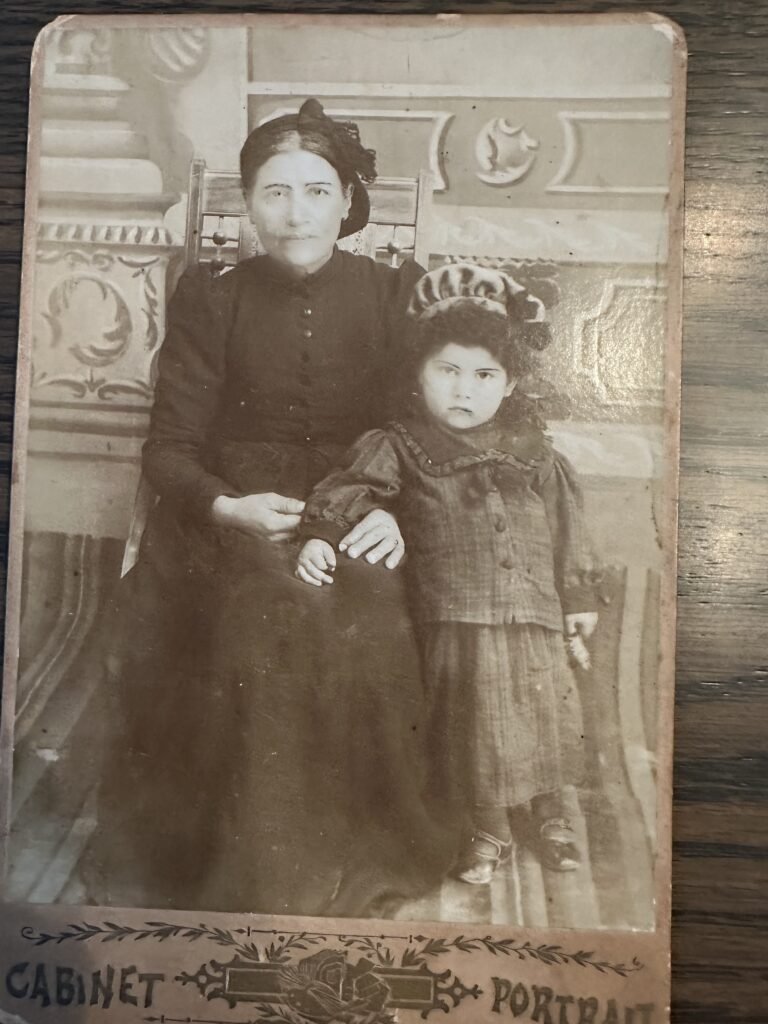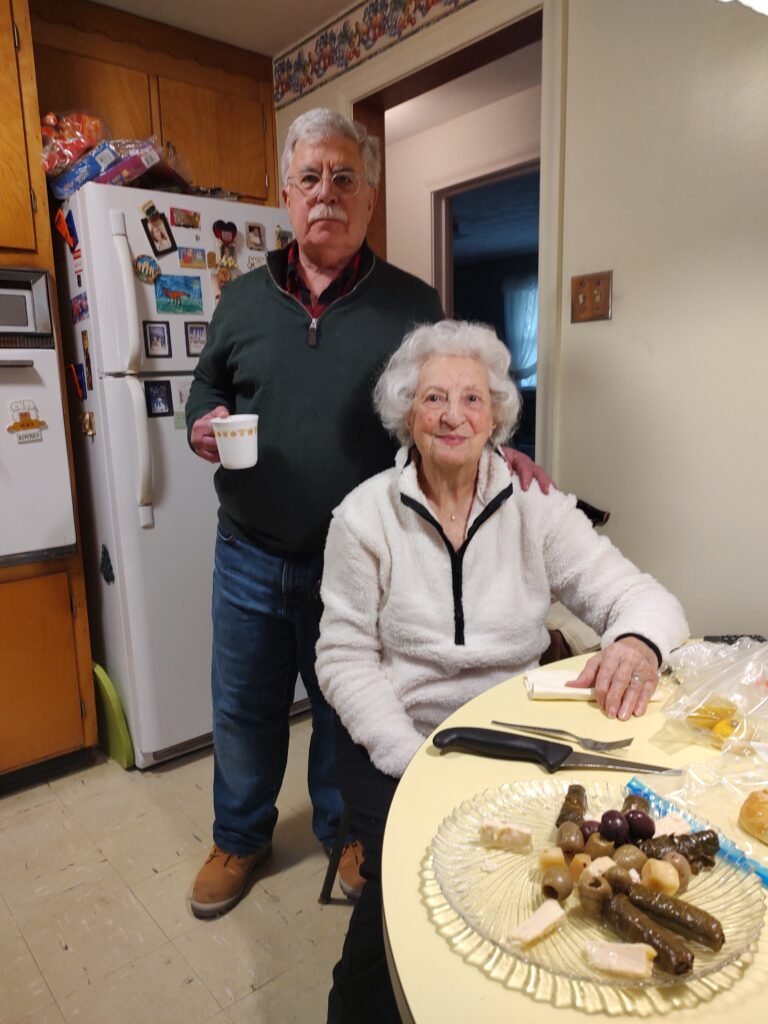The anticipation for our genealogical pilgrimage finally subsided as March 28 arrived. In my previous column, I shared how my cousins Joe, Peter and I reconnected and decided to embark on a road trip together to map out our family tree. While I was disappointed that the agreed upon day for the trip was Holy Thursday, I understood the difficulty of finding a common day since one cousin was driving from Maine and the other from the North End in Boston. The ancestors who we are researching were devoted to our faith, and it created a synergy in my mind between our journey and the Easter season. Last Thursday was a terrible weather day as a rain front stretched from Maine to our destination in New Britain, Connecticut. The driving challenges were completely neutralized by the robust conversation between the three cousins. I had not seen Joe in over 30 years, yet our dialogue seemed as if it had never been interrupted by time. He is my mother’s first cousin, since my grandmother and his mom were sisters. Joe’s mom was the youngest of the Galgegian siblings, so Joe was closer in age to us. Peter is the grandson of another of my grandmother’s sisters, and his mom was my mother’s first cousin and childhood best friend. Both cousins grew up in New York. Despite the distance, we saw each other regularly in our youth.

The common link for the three of us was our great-grandmother, Takouhi (Victoria) Galgegian. Takouhi was the mother of four girls, our grandmothers plus another named Agnes. Takouhi immigrated to this country in 1902 from Cyprus as a young mother with my grandmother, along with her brothers (Karekin and Kevork) and parents (Stepan and Sima). One of our objectives was to understand the birthplace of Takouhi and her parents. There was some anecdotal information that one or all may have been born in Western Armenia. How many generations lived in Cyprus before the wholesale migration to America in 1902? The family name that connects all of us is Kevorkian, which was Takouhi’s maiden name. Given the fact that this immigration took place 122 years ago, we have relied on genealogical websites and cemetery records. It is a blessing, however, that we made contact with the last living Kevorkian of that generation who is the daughter of Karekin (Harry) Kevorkian and his wife Mari. Sue Kochunas is 103 years old and still lives independently in the New Britain area. I spoke to her on the phone a few times asking for her help in our search. She knew my mother well, and we did meet many years ago.
Sue is an intelligent, engaging and simply delightful person and the highlight of our trip. She wanted to participate in our local travels that day, so we arranged to drive to her home first. Sue was a wealth of information and immediately clarified several open questions. The Kevorkians, which included five offspring of Karekin and Mari (Arthur, Michael, Steve, Shirley and Sue), lived across the street from St. Stephen’s Church on Tremont St. in New Britain. Karekin was a successful real estate businessman and donated the property upon which the church was built in 1926. He was the godfather and deacon of the church. Shirley played the organ for 60 years for the parish. In my youth, we would often visit my grandparents in New Britain and attend Badarak at St. Stephen’s. After church, we would visit the Kevorkian cousins across the street. It was always a treat to see this home with its beautiful stonework, stained glass and custom woodwork. Mari “Harss” was a sweet and kind woman who always treated us like her own grandchildren.

While reviewing family photos at Sue’s home (some were hers and others were brought by Joe), she helped us understand our family from four generations ago. Her grandparents, Stepan and Sima, came to this country in 1902, and the entire group was able to avoid the Ellis Island process because they migrated from British territory. Some time after 1902, Stepan wanted to visit Cyprus and asked his unmarried son Karekin (Sue’s father) to accompany him. Unfortunately, Stepan died on the ship. Upon Karekin’s insistence, he was buried at the nearest port of call in Alexandria, Egypt, rather than the burial at sea protocol that the captain wanted to follow. This explains why only Sima is buried at the cemetery, which we visited later that day. Sima died in 1922. Karekin (Harry) returned to New Britain and visited Cyprus again in 1914 to participate in a pilgrimage to Jerusalem. It was on this voyage that he met his future wife, Mari, who traveled from Smyrna (Izmir), Turkey to attend the pilgrimage. They met in what seemed like a scene from a romantic drama, were married after three months and moved to the United States.
It is interesting to note that this happened in the eastern Mediterranean just prior to the outbreak of WWI. Another few months and they would have been unable to travel due to the war, and our family history would have been altered. Karekin returned to the United States with his wife, built his business and became the devoted patriarch that we remember. My great grandmother Takouhi (Karekin’s sister) lived in Hartford and had three additional children in this country between her arrival and 1915. Our prior knowledge of her began only after the birth of her children. While at the cemetery, we met with the director who had conducted some research based on a previous phone conversation. We reviewed the handwritten journals for Sima and Takouhi at the time of their deaths (1922 and 1953, respectively). It was through these journals that we discovered that not only was Takouhi born in Cyprus (Nicosia) but also her mother and father (Sima and Stepan).
Assuming the accuracy of these records and cross-referencing to immigration records (which we will do), it seems that an additional earlier generation was born in Cyprus. Their births go back as early as around 1860, which would have been the earliest that any migration from the western highlands took place. That timeframe also predates any of the major atrocities that may have caused migrations. Of course, it does not preclude local issues that may have created the mid-19th century movement to Cyprus. More research is needed to identify previous generations and the history of the Armenian community in Cyprus. Some pieces of the puzzle were answered and yet more were uncovered awaiting further discovery.
Examining journal entries at the cemetery that were over 100 years old was a fascinating experience. Each column revealed something about our ancestors. The circumstances were so fragile that the slightest shift would have created an entirely different future. What we learned about their lives can be described in three common themes: a strong faith, a commitment to family and a sense of dignity. As I mentioned earlier, Karekin Kevorkian helped to establish St. Stephen’s parish. As the godfather, he selected the name “Stephen” as one of the first martyrs in Christianity and to honor his father Stepan. He continued to serve the church for decades until his passing in the 1950s. He instilled this faith in his children who became stewards of the church. Sue shared with us many wonderful stories of the Kevorkian clan’s social gatherings in the 1920s through the 1950s. By all accounts, Takouhi was a strong, resourceful Armenian woman who was very close to the church.
We listened with gratitude about the resilience of our ancestors. My grandparents were very close to their relatives and shared many holidays and beach outings together. Most of the family from the immigrating generation was born near water (Cyprus, Smyrna and Dardanelles). This love of the ocean was gifted to their children at the Connecticut shores. The bonds that were built during those early years survived years of separation, as succeeding generations are now reconnecting through their common lineage. We are so fortunate to have had the time with cousin Sue last week. She brought the pictures we have inherited to life and added her personal recollections that helped us make sense of our early family tree.
We went to New Britain with a simple objective. Before my grandmother, where were the generations born, and what were the sibling connections? We accomplished this purpose and gained so much more. This type of work is not simply about understanding family history. Since it is accomplished through connections, some of which are current, we are able to re-establish broken branches. After dining with Sue at a local restaurant, she offered us dessert at her home. While enjoying apple pie, we were human sponges absorbing her every story and family member identification.
On the way home (in the rain), the three of us were like teenagers who had just gone to a rock concert. The day was remarkable, and cousin Sue was a star. We thank God, who has granted her a long life to share with succeeding generations. The next day, I called Sue to thank her for her hospitality and the joy of our visit. Without a moment of hesitation, it was she who thanked us for taking the time to care. As incredible as that seemed, I realized how gratifying it must be for someone who has seen so much to share it with others who have the same values. Later in the day, I called Sue’s daughter to introduce myself and share our excitement. She was as gracious and engaging as her mother. I met another branch on the Kevorkian limb. Our trip has identified more work in our quest to remove the fog and bring clarity to our understanding of our ancestors. We will use the tools that are at our disposal and hopefully gain more knowledge. We will also celebrate and cherish the new relationships that have been identified. We pray for the souls of our ancestors and hope to honor their memory by continuing to connect the branches of our tree.



Dear Stepan,
It may be helpful to your search to know that according to the Armenian Gazetteer, there was a village with the name of Ghaljink. The entry indicates that Ghaljink was located in the province of Cilicia, in the state of Adana, in the county of Marash, in the district of Zeytoun. In 1878, there were 280 Armenians living in the village. The village also had an Armenian name of Avakenk. There was a Vank called Sourp Prgitch, and the ruins of a 12th century fortress called Khalij (which may be the origin of the variant Ghaljink).
Takouhi’s surname was written as Galgegian. It is likely that the spelling is a variant of Ghaljink-ian. Since so many Armenians emigrated out of the broad province of Cilicia into Cyprus during the late-19th century, it is possible that her ancestral village may have been Ghaljink in the Zeytoun district.
I hope this might be helpful to you.
place of origin Adana Klikya
year 1920
Piligyan, Hripsime
Piligyan, Himayag
Piligyan, Mıgırdiç
https://heritage.statueofliberty.org/passenger-result#:~:text=Lapland-,Piligyan%2C%20M%C4%B1g%C4%B1rdi%C3%A7,-1920
https://heritage.statueofliberty.org/passenger-result
Your family elders’ Ottoman passport or a similar document, or official records written where they set foot in America…
You need to go to Dacık/Turkish consulate general or consulates.
By submitting a written petition to the consular officer (including the photocopy of the supporting documents you have), T.R. State Population Office; You should request a copy of the information regarding your family elders’ records from the records…
No, it was written there, no, an acquaintance told me this…
Gossip .
Dead end.
The father’s side has a different story, the mother’s side has a different story…
Sivas, Adana, Ankara, Çanakkale and Cyprus….
It’s a very wide geography.